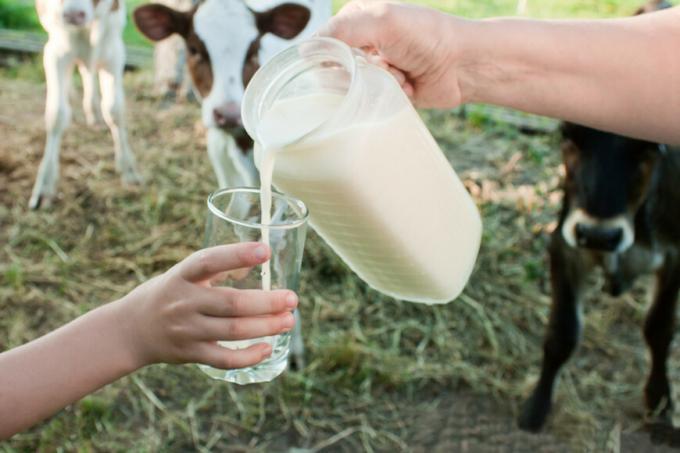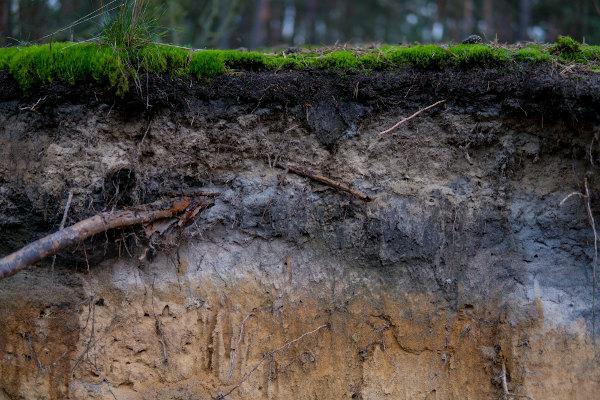O primary sector is a segment of the economy that brings together primary activities, that is, agriculture and the three types of extractivism (animal, vegetable and mineral). This is a very important economic area as it is responsible for the production of food and raw materials, which are also sold on the international market.
In Brazil, for example, the primary sector has always played a prominent role in the formation and development of the national economy.
Read too: What are the sectors of the economy?
Summary about the primary sector
The primary sector is a segment of the economy that comprises agricultural and extractive activities, which includes the three types of extractivism (animal, vegetable and mineral).
It is responsible for the production of food and raw materials.
Commercial fishing, soybean and rice planting, cattle ranching and iron ore exploration are some examples of activities in the primary sector.
It is important for supplying industry and the population, and is also fundamental in the economies of many emerging countries and underdeveloped.
This is the segment that produces commodities, important for the world economy.
The development of the primary sector is closely linked to the history and process of economic formation in Brazil.
What is the primary sector?
The primary sector is one of the areas of the economy that brings together agricultural and extractive activitiesistto the, being responsible for the production of raw materials for the industry and also for providing food for the population.
This is a fundamental branch for the development of other economic activities, considering that it includes the production of basic items for the transformation industry and moves the economy at different territorial scales (local, regional and national).
Characteristics of the primary sector
The primary sector has as its main characteristic the production of materials that we call primary or basic, and which are found in their raw form. This means that the products developed by this area of the economy have undergone little or no transformation in industrial processes. Many of them, like food, are sent directly to the final consumer, which is the population. Other products are destined for industries and, for this reason, they are called raw material.
You products that we know as commodities originate in the primary sector of the economy. Commodities are characterized by large-scale production and commercialization and by having low added value, sold in their raw state or in nature. Commodities are very important for the world economy and lead the exports of many countries, such as Brazil.
To the Primary sector activities are developed in rural areas, due to the fact that they depend directly on the ground and other natural elements for its realization, as we will see later.
It is also important to highlight that the amount of labor employed in this sector varies according to the activity and the degree of technology that is used in the production process. Some areas such as livestock and from agriculture, for example, make use of modern machinery that requires fewer workers, as functions have become automated.
Read too:Difference between extensive and intensive livestock farming
Primary sector activities
There are four main economic activities that make up the primary sector:
Agriculture: characterized by the planting and harvesting of different types of vegetables that are used for human consumption or as raw material for the food and processing industries. Soybean cultivation is an example of agricultural production intended for the production of other elements such as oil and animal feed. Cotton plantations are often destined for the textile industry, where fabrics are manufactured. Tomato planting, in turn, serves both for direct food consumption and for the production of other foods by industry.
Livestock: is the raising of animals for the purpose of producing food and raw materials. An example of livestock farming is cattle (oxen and cows), which aims to supply milk, meat and leather.

Forestry: This activity consists of planting trees to obtain raw materials.
-
Extractivism: is the extraction of resources from the natural environment. It is divided into three modalities:
→ Plant extractivism: removal of plant elements (roots, leaves, wood, sap, wax) from plants and trees previously existing in nature for economic purposes. Example: extraction of latex from rubber trees to manufacture rubber. Plant extraction and agriculture are different activities. In agriculture, plants are planted and then harvested. In plant extractivism, the desired material is obtained from species that already exist in nature.
→ Animal extraction: hunting and fishing for animals for economic purposes and for consumption. Example: fishing in the port of Itajaí, in Santa Catarina, considered one of the largest fishing centers in the country.
→ Mineral extraction: extraction of minerals soil and water to serve as raw material for industry. Example: exploration of iron ore in Serra dos Carajás, in the state of Pará.

Why is the primary sector important?
The primary sector is important because it is the mainly responsible for the production of basic items for our subsistence and also for the manufacture of goods by industries. It also plays an indispensable role in the economy of many underdeveloped countries, both in generating resources and in allocating labor.
As we saw previously, the primary sector of the economy produces many foods that can be consumed directly, without the need to be processed, such as fruits, vegetables, eggs and milk. In addition to immediate consumption, items like these are important for generating income for small and medium-sized businesses. agricultural products, animal breeders and fishermen, who derive their livelihood and that of their families from these activities. families.
The raw materials used in industry are derived from the primary sector of the economy. These elements are fundamental for the production of many of the goods used daily by the society such as fuels, household appliances, cosmetics, clothing, footwear, accessories, food and drinks.
Read too:Secondary sector — the one that transforms raw materials into goods
Development of the primary sector
The primary sector was the first branch of the economy to develop worldwide. The activities that belong to this segment have been practiced for thousands of years, since the emergence of of the human species, when thinking about hunting, and of sedentarization, with agriculture and the creation of animals.
Over time, the formation of populations and the development of society, the productive surplus began to be commercialized, thus transforming land and natural elements into important sources of income. Natural resources have gained increasingly more importance in the international economic scenario and have been at the center of events of great magnitude, such as colonialism and industrialization, to name some of the oldest.
Currently, the primary sector plays a prominent role in the global economy, considering that it is the responsible for the production of commodities. Examples of commodities include soybeans, iron ore and Petroleum, fundamental elements for the economy of many underdeveloped countries and also emerging countries. Furthermore, some of these commodities are at the center of the main geopolitical disputes in the modern world.
Primary sector in Brazil

The primary sector has always gone hand in hand with Brazil's economic development. Activities such as agriculture and animal husbandry for commercial and economic purposes were established at the beginning of the colonization of the country, from then on, several economic cycles followed, with one or more products derived from this segment as the main element:
Brazilwood cycle;
sugar cane cycle;
gold cycle;
coffee cycle;
rubber cycle.
Industrialization did not diminish the importance of the primary sector for the Brazilian economy. With the modernization of agriculture, which took place in the second half of the 20th century, the country saw an increase in agricultural activities. agribusiness and the national production of agricultural commodities. In the 21st century, Brazil has become one of the world's main suppliers of commodities, such as those mentioned previously, especially soybeans, corn, cotton and iron ores.
Internally, the primary sector is essential for supply. It is small and medium-sized rural producers who produce the food that is sold on national markets, at the same time as livestock, fishing and Extractivism plays an important role in the supply of raw materials, food and also in the local economy of many coastal cities and the interior of the country. country.
Image credits
[1] Joa Souza / Shutterstock


